Recently I bought a mobile portable WiFi router Flycat SmartLink U8, the features surprised me, but the internet speed is average.
Publish: 2023-03-04 | Modify: 2023-03-04
Foreword
Recently, I purchased a large data card from a telecommunications company, which made me think about how to make the most of this resource. To this end, I had been planning to buy a portable WiFi device a long time ago, and this time I finally took action.
After browsing on JD.com, I found that there are few manufacturers producing such devices because the demand is relatively niche, and most smartphones also support WiFi sharing. After considering it, I finally chose the "Feimao Zhilian U8" which has high ratings and good sales (I will introduce its functions in detail later) when I received the package, I found that its performance was even better than I expected.
Suitable Scenarios
Let's sort out the scenarios where this portable WiFi may be used.
- In rental houses where broadband is not installed, but multiple devices need to be connected to the internet at the same time.
- WiFi coverage is needed in a car.
- A tablet needs to be connected to the internet outdoors (Xiaoz's requirement).
These are the scenarios I can think of for now. You are welcome to leave a comment to add more. If you don't have any scenarios to use it, I don't recommend buying it because WiFi coverage is quite extensive nowadays, and there is basically free WiFi everywhere you go.
Purchase Link
"Feimao Zhilian U8" JD.com purchase link: https://u.jd.com/wb4qC3T
Unboxing and Picture Sharing
The device has a silver shell and a blue cable. The shell is made of plastic and the interface is Type-C. It also comes with a USB adapter.
After opening the back cover, you can insert your own SIM card. Feimao also includes a SIM card, but I think their data plans are not cost-effective, so I threw it away without activating it and inserted my own large data card from the telecommunications company.
On the right side are some network information, such as WiFi name, WiFi password, management address, and password. We will need these later.
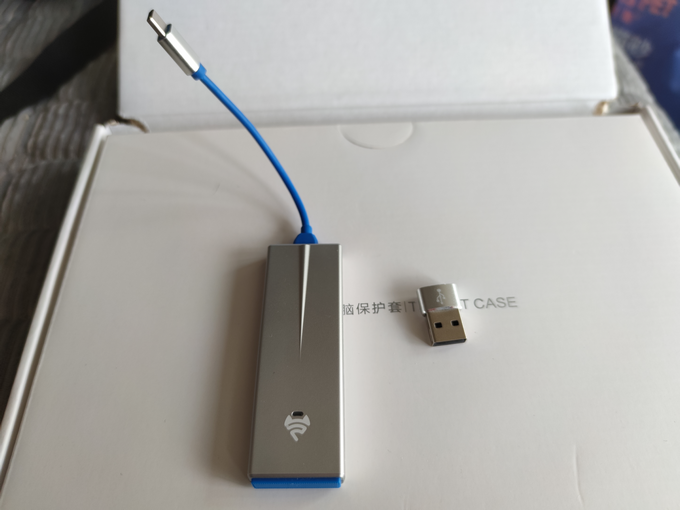
Getting Started
After inserting my own SIM card, I plugged the "Feimao Zhilian U8" into my device, which can be a smartphone, tablet, desktop computer, power bank, etc., as long as the interface matches. Xiaoz tested it and found that it took about 12-20 seconds to connect, and the connection speed was acceptable.
If you connect the "Feimao Zhilian U8" to a tablet or other devices, you can directly access the internet without any additional operations. It will also create a WiFi network for other devices to connect to, but it supports a maximum of 8 devices.
Next, you need to modify the WiFi name and password for security reasons. You can find this information on the right side of the image above (open the browser and go to 192.168.0.1). Then go in and modify the WiFi name and password to enhance security (I will omit how to modify the WiFi name and password here, as those who have used routers should be familiar with it).

I never expected that such a small device would have a web console. Its backend is similar to a general router backend, but with fewer functions.
The backend has an "Internet WiFi" function, which I didn't understand at first. After consulting customer service, I learned that enabling this function is equivalent to using the "Feimao Zhilian U8" as a wireless network card to connect to other WiFi networks. This function might only be useful for desktop computers. It can only be used in emergencies, as it is not specifically designed for this purpose.
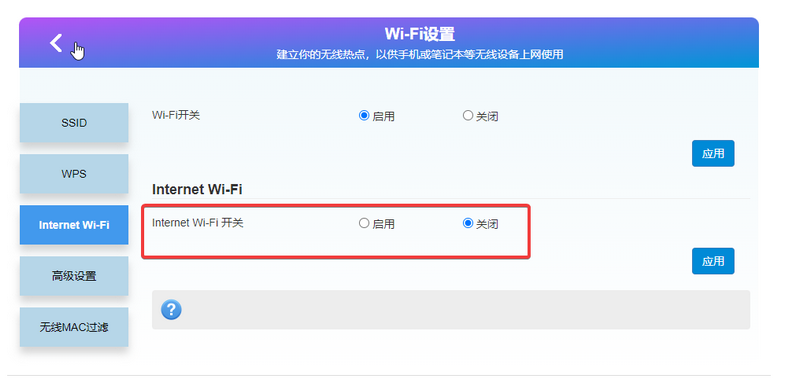
What's even more interesting is that the backend supports sending and receiving text messages. I never expected that. However, I failed to send and receive messages using my telecommunications card at first.

Later, I consulted customer service and was told that sending and receiving text messages is only supported by China Mobile and China Unicom. Unfortunately, my large data card is from China Telecom, so I had to spend an extra 2 yuan/month to subscribe to China Telecom's message forwarding service. Otherwise, I could have saved this huge expense and enjoyed the built-in text message feature of the "Feimao Zhilian U8".
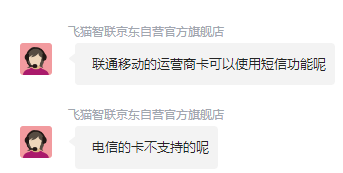
You can further explore other functions on your own.
Speed Test
I tested with both China Telecom and China Mobile cards, indoors and outdoors, and found a significant difference. Below are some screenshots of the speed test.
For China Telecom, the download speed indoors was less than 2Mbps, which was quite embarrassing and made me suspect that there might be a problem with the device.
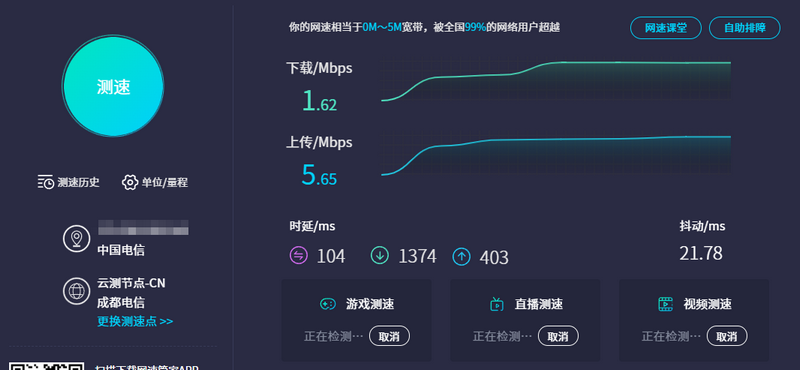
Then I switched to the China Mobile card for testing, and the download speed was close to 8Mbps, finally getting back to normal. Now I began to suspect that my China Telecom SIM card might be speed-limited.
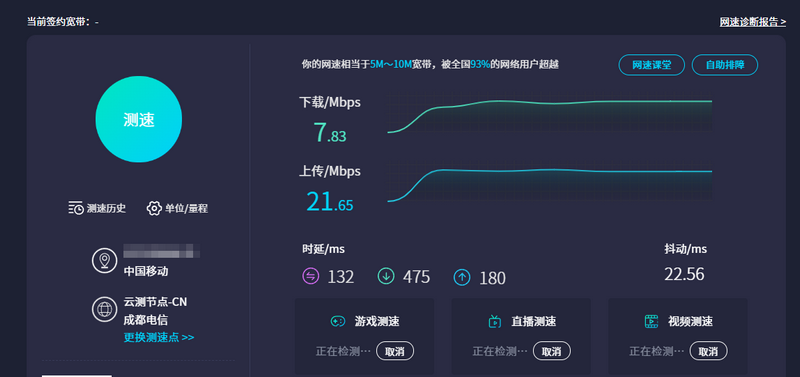
I called China Telecom customer service, and the customer service representative said that there was no speed limit, everything was normal. So I took my tablet and the "Feimao Zhilian U8" outside for testing, and this time the China Telecom card finally achieved a speed of nearly 40Mbps. It seems that there is a big difference between indoors and outdoors.

There are many factors that can affect internet speed, and my tests above are not comprehensive, so they can only serve as a reference.
Summary
- "Feimao Zhilian U8" can be used with your own SIM card and supports the three major cloud operators (China Mobile, China Unicom, China Telecom). It only supports 4G networks and does not support 5G networks.
- "Feimao Zhilian U8" uses the WiFi 4 protocol and does not support IPv6. The speed is relatively slow.
- "Feimao Zhilian U8" has poor indoor network speed but performs well outdoors (Xiaoz's testing is not comprehensive and is also related to the network operator and base station coverage).
- "Feimao Zhilian U8" can also be used as a wireless network card (usually for desktop computers).
- "Feimao Zhilian U8" supports sending and receiving text messages (only supports China Mobile and China Unicom, not China Telecom).
The price is less than 100 yuan, although it is not used frequently, it is still quite convenient to have such a portable WiFi. What do you think?
Purchase link for "Feimao Zhilian U8" on JD.com: https://u.jd.com/wb4qC3T
Comments

xiaoz
I come from China and I am a freelancer. I specialize in Linux operations, PHP, Golang, and front-end development. I have developed open-source projects such as Zdir, ImgURL, CCAA, and OneNav.
Random article
- I Implemented Wireless Network Wake-up Using an Abandoned Wireless Router
- UltraVPS Special Offer: 1 Core, 1GB RAM, 40GB SSD for only €16.8/year
- One-click Installation of Caddy + Aria2 + AriaNg on Linux for Offline Download
- Markdown Temp supports sending documents to WizNote.
- HostKvm: Get $10 bonus for every $50 recharge, Double 11 VPS Sale - 40% off site-wide
- Rapid Speed Causes AMH Panel Unable to Download Modules
- Quickly Withdraw PayPal Balance Using LianLian Pay
- Windows Azure Exceeded Limits, Almost Crashed the Website
- Multi-functional File Sharing Program Zdir 4.1.0 Update, Offline Download? Plan?
- Methods to Enable Cloud Clipboard on Windows 10